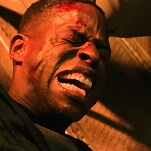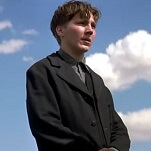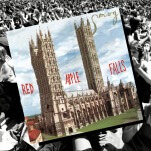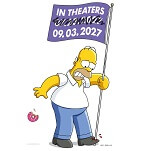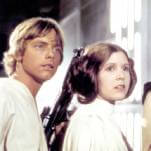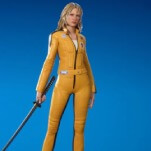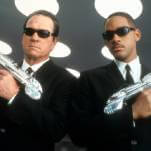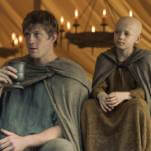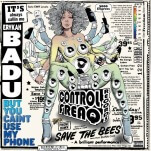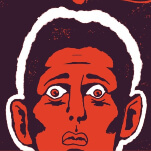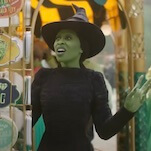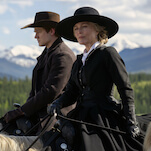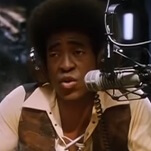Lev Grossman lists his 5 favorite magic portals in fantasy fiction
With Reading List, The A.V. Club ask one of our favorite pop-culture creators to describe a list of reading materials that are tied together by a singular theme.
The reader: Lev Grossman had an instant hit on his hands with his 2009 fantasy novel The Magicians. In it, a troubled young man named Quentin Coldwater comes to find he’s a magician—and furthermore, that he’s able to cross over into Fillory, a magical, Narnia-like land that he thought only existed in a series of children’s books he loved as a kid. The story continues in 2011’s The Magician King as well as the final book in the trilogy, The Magician’s Land, which comes out August 5. It was also announced last month that Syfy has ordered a pilot for an adaptation of the series. When The A.V. Club asked Grossman for a Reading List, he picked out his five favorite magic portals between worlds in fantasy fiction, a subject near and dear to both his heart and his work.
The Subtle Knife in Philip Pullman’s His Dark Materials trilogy
Lev Grossman: That’s just a piece of genius. It feels so utterly real. It’s a great setpiece, the first time they use the Subtle Knife. They go through this whole sequence of feeling around in the air for this seam. I think Pullman compares it to picking at a seam in a piece of clothing. And then he finds the point, and he makes the cut, and reality sort of falls open. You can see through to a new reality. Pullman is a writer of perfect things, and that’s one of them. Every fantasy writer at some point gets called upon to get his characters from one dimension to the other, and you have to sit down and rack your brain about how they’re going to get there. I realized only after the fact that I borrowed from Pullman a bit when I gave someone a key to poke into the air, to find a lock. Then they turn the key, and a door appears. It’s that same action, of searching for the tip of something. I stole that from Pullman. But it’s too late. He can’t have it back.
The A.V. Club: Why are you drawn to writing about worlds with these kinds of portals, as compared to, say, George R. R. Martin’s A Song Of Ice And Fire, which exists in its own self-contained reality?
LG: There’s an appeal to those portals, and it’s always been extremely primal to me. Even when I was 8 and read The Lion, The Witch, And The Wardrobe for the first time, it hit me like a truck. Of course this can’t possibly be all there is. There has to be some alternative to this world that’s all around me. If I could just look in the right direction, I could see it. There’s something so seductive about that idea, and I knew I had to write about it at some point. I remember reading [the first book in] A Song Of Ice And Fire in the ’90s and thinking, Martin has remade epic fantasy completely. He’s taken the Tolkien tradition and transformed it. Nobody had done that for the C.S. Lewis tradition, which has always had more of an air of middle-grade fiction about it. Could you take that idea of the portal fantasy and drag it into adulthood? What would it look like? That’s where The Magicians came from, trying to reengineer that subgenre for adults.
The magic rings in C.S. Lewis’ The Magician’s Nephew
LG: C.S. Lewis is the all-time untouchable champion of interdimensional travel. Just to show off what a genius he was, he never did it the same way twice. One way he does it with these magic rings, these yellow and green rings. It’s an extremely intricate mechanism that takes you to this in-between world, The Wood Between The Worlds, from which you can then proceed to your final destination. One of my original thoughts when I wrote The Magicians was to build on that. In Lewis’ The Magician’s Nephew, they wind up burying the magic rings. I thought, surely 75 years from then, someone’s going to dig up that yard with a backhoe. These rings are going to come to light again, and they’ll, you know, circulate on the black market. I ended up using a button instead of rings, but it’s fairly clear that Lewis’ rings are what I had in mind.
Those rings are really marvelously magical objects. They—he described them—they were almost like hard candy. I always imagined them as kind of lickable. I don’t know if that’s how he thought of them, but that’s how I thought of them. I also thought, what an enormous potential for abuse those rings had. I felt conscious that he had to get rid of them by burying them. Unlike, for example, the painting in The Voyage Of The Dawn Treader, which is clearly a one-off portal, the rings are a much more mechanical means of getting between worlds. With those rings, you could presumably get to Narnia whenever you wanted to. You don’t have to wait for the summons from Aslan. You can just sort of nip over whenever the urge struck you, which is no good for the basic storytelling mechanics of the Narnia books. The rings kind of break Narnia, which is why I see he had to get rid of them. The rings are also a rare example of Narnia having actual magical objects. Lewis didn’t like magicians. If you’re going to have magic powers, mostly you’re going to be Aslan. But in this case, he obviously couldn’t help himself.
In an early draft of The Magicians, I’d actually set a scene in The Woods Between The Worlds. I figured since it was a setting and not a character, there wouldn’t be any copyright issues involved. I was surprised at how vehemently my publisher’s copyright lawyers disagreed with me. [Laughs.] I was forced to rewrite it. But on my hard drive there were lots of descriptions of the characters from my books hanging out in Lewis’ The Woods Between The Worlds. I was at pains to point out during legal hearings that Lewis had himself swiped the idea from somebody else. There was a book [by William Morris] called The Wood Beyond The World, which Lewis clearly repurposed for Narnia. But that argument cut no ice with the lawyers, I’m afraid.
AVC: Out of all of Lewis’ portals to Narnia, why didn’t you choose the big one: the wardrobe?

